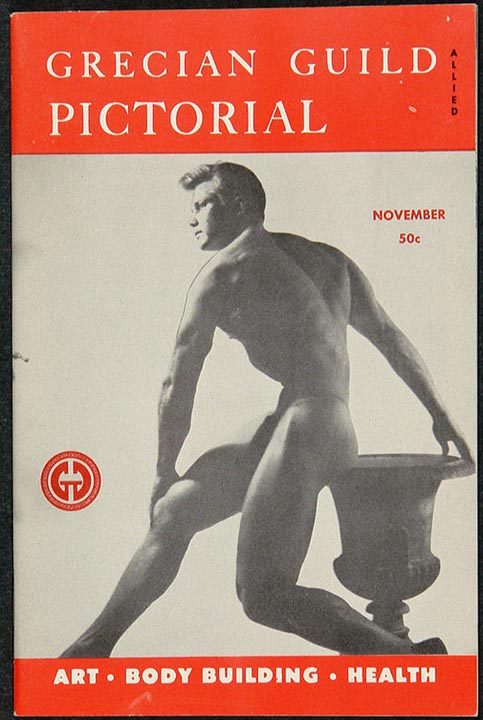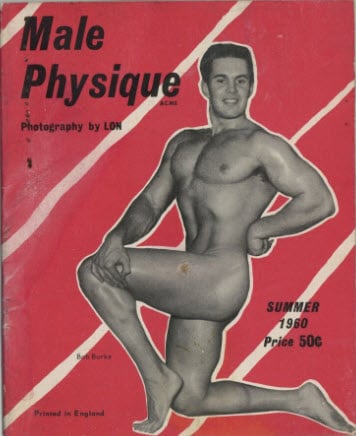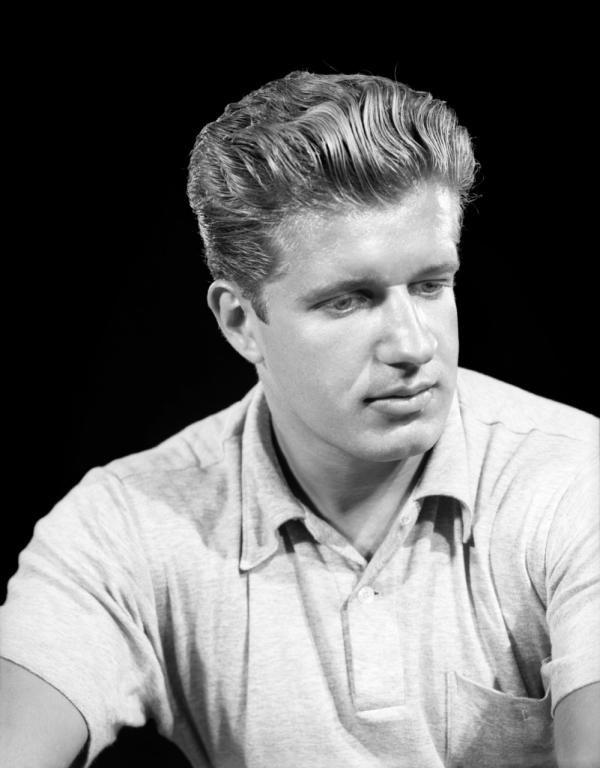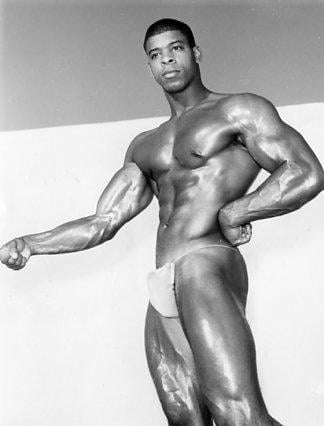Magazines provided risky outlet of desire for closeted gay men
In the 1940s and 1950s, there existed a group of men who were both excited and fearful when they made the trek to the mailbox every day.
3 min read
Bob Mizer Foundation : Mar 8, 2016 2:25:00 PM

H. Lynn Womack was at a turning point in his young life.
Very little about Womack was easy to ignore. He was rotund and known for his voracious appetite and booming laugh. Womack was an albino, his hair a glistening white from a young age. And now, both his personal and professional lives seemed to be in jeopardy.
It was about the time when Bob Mizer founded the Athletic Model Guild, when male physique photographers began to emerge as serious artists with clientele who clamored for the latest in beefcake images. Womack, a gay man, was coming to terms with his own sexual orientation, and decided to divorce his second wife in 1946. Shortly thereafter, a boarding school of which he was a founding member shuttered its doors as enrollment dipped. The world of academia continued to beckon to Womack, however, and he earned his doctoral degree in 1955 from Johns Hopkins University. Womack taught at George Washington University for several years.
An earlier investment in a printing press, however, gave Womack a new opportunity to pursue a completely different career – the career of the owner of a gay publishing house.
Mizer’s own “Physique Pictorial” had been in circulation for nearly a decade when, in 1960, Womack founded the printing press MANual Enterprises, which later became Guild Press. The press specialized in art and physique magazines, catering to an almost exclusively gay clientele.
“The initial success of the Guild Press was disrupted when the U.S. Postal Service tried to shut down three of the Guild Press’ most well-known publications – ‘Trim,’ ‘Manual,’ and the most widely enjoyed, ‘Grecian Guild Pictorial,’” says Dennis Bell, founder and president of the Bob Mizer Foundation. “Womack’s battle in the court case MANual Enterprises v. Day was notable because it was a First Amendment case which determined that erotic material intended for gay men was not obscene. Eventually, Womack won the case in an appeal to the U.S. Supreme Court.”
From the Guild Press came “The Grecian Guild,” a beefcake publication similar in style to Mizer’s “Physique Pictorial” with one major difference – readers could also join an accompanying organization where they could meet and network with other gay men.
“When you joined the Grecian Guild, you received a lapel pin that you would wear and make yourself easily identifiable to other members of the Guild,” Bell says. “Womack envisioned that the organization would eventually be able to sponsor national conventions and regional chapters.”
Womack’s link between his publication and the imagery of ancient Greece did indeed have a purpose, according to scholar David Johnson of the University of South Florida.
“The Guild had its own creed for members to uphold, one that invoked the perceived ideals of ancient Greece, the ‘most intellectual and artistic society the world has ever known,’ a place where ‘they believed that the body of a muscular, graceful, well-proportioned youth was among the most admirable of all things,’” Johnson wrote in an article published in the Journal of Social History.
By the mid-1960s, as “Physique Pictorial” circulation numbers grew, so too did those of “The Grecian Guild.” Soon, the magazine was publishing monthly instead of every three months.
Womack’s plans for the Guild to boast regional chapters and conventions were curtailed when a rival physique magazine, VIM, criticized the Guild for being the antithesis of that which its editors claimed to adore – that many models who appeared in the magazine lacked muscular definition and appeared almost malnourished. According to Johnson, VIM editors accused the leadership at “The Grecian Guild” of exercising “moral pollution” and of indirectly encouraging promiscuity through its proposal of national conventions, where members would be able to “indulge in the various activities that bound members together, whatever those activities might be.”
In an age where male physique magazines hid behind statements that their models promoted good health, VIM editors’ witch hunt against the unabashedly gay-themed “Grecian Guild” found its way into the magazine’s pages, with readers submitting letters in which they denounced Womack’s publication as nothing more than pornography of the most salacious kind.
The relentless attacks from VIM and other publications did little to deter Womack and his crusade to uphold his right to publish “The Grecian Guild.” In 1963, the magazine published a controversial editorial in which it decried censorship, arguing that it caused sex crimes instead of prevent them. The editors encouraged readers to actively defend their First Amendment rights – to call their admiration for other men exactly what it was: sexual desire.
“Don’t just lie down. Write to the papers. Spread the word around. Insist on your rights at all times,” the editorial implored.
 In a show of solidarity and support, which Mizer himself encouraged among his competitors, “The Grecian Guild” showcased Mizer images and AMG models in its magazines at least twice over the course of the Guild’s history, according to Bell. "One was a sequel to Mizer's 1957 Thousand Model Directory, and the other explored his film work.
In a show of solidarity and support, which Mizer himself encouraged among his competitors, “The Grecian Guild” showcased Mizer images and AMG models in its magazines at least twice over the course of the Guild’s history, according to Bell. "One was a sequel to Mizer's 1957 Thousand Model Directory, and the other explored his film work.
It wasn’t the Guild’s competitors who eventually led to the organization’s demise; rather, it was Womack’s status as a notoriously incompetent businessman who was unable to keep the business financially solvent. Womack and the Guild, in addition, became the target of an FBI investigation after anonymous sources charged that Womack used underage models in several of his publications.
The Guild, still years short of even its 20th anniversary, went bankrupt in 1974; Womack died a little more than a decade later, in 1985.
“Womack took the idea of the male physique publication and really expanded it with the intent of allowing like-minded gay men to meet and form a support network,” Bell says. “Even though he endured much criticism from within the industry, he still held firm to his belief that gay men shouldn’t have to conceal their true reasons for enjoying beefcake photography.”

In the 1940s and 1950s, there existed a group of men who were both excited and fearful when they made the trek to the mailbox every day.

I’ve always been a trusting, naïve person by nature.

The difference between a mere appreciation of a Bob Mizer model and one that catches your eye every time you see him splashed across a page is all in...

Since we’re on a bit of a fashion kick this week, we thought we’d draw attention to some rather fashionable drawers – underwear, that is. When AMG...